Introduction
In the ever-evolving landscape of business finance, a strategic approach to financial management is not just advantageous; it is essential for survival and growth. The intricacies of budgeting and forecasting form the backbone of effective resource allocation, guiding organizations through the complexities of cash flow management and financial health assessments. Monitoring key financial metrics becomes a vital practice, offering insights that empower CFOs to make informed decisions.
Regular financial check-ins and strategic financial planning help in aligning organizational goals with fiscal realities, while accurate bookkeeping ensures compliance and operational integrity. Establishing financial buffers prepares businesses for unforeseen expenses, and assessing liquidity, profitability, and solvency provides a comprehensive view of financial health. Optimizing asset management and managing credit effectively further solidify a company’s foundation.
This article explores these critical components of financial management, offering actionable insights for enhancing fiscal stability and strategic success in today’s competitive environment.
Budgeting and Forecasting
Effective financial health hinges on the implementation of a comprehensive budgeting and forecasting system. A well-structured budget serves as a critical roadmap for resource allocation, guiding organizations in efficiently managing their finances while anticipating revenue streams and necessary expenditures. This budget is not merely a collection of figures; it encapsulates a company's strategic objectives and priorities, offering insight into expected income and outflows.
A fundamental aspect of sound budgeting is a thorough understanding of cash flow, which is vital for sustainable growth. By monitoring the inflow and outflow of funds, organizations can ensure they meet their operational expenses while also positioning themselves for future growth. Employing a business budget template can simplify this process, establishing a clear structure for arranging monetary data and promoting informed decision-making.
Forecasting extends beyond mere prediction; it involves a careful analysis of historical data to provide a realistic projection of future economic performance. This proactive approach allows organizations to adapt their strategies in response to fluctuations in the market. For instance, adopting zero-based budgeting (ZBB) can enhance an organization's ability to scrutinize each expense from scratch each fiscal year, promoting fiscal responsibility and ensuring that every line item is justified based on current needs rather than past spending habits.
The typical budgeting process translates long-term strategies into actionable annual operating plans. This involves a comprehensive analysis of anticipated revenues and expenses, aligning monetary targets across various organizational segments. By routinely contrasting actual results with these forecasts, organizations can make prompt modifications to keep in sync with their monetary objectives. Ultimately, a robust budgeting and forecasting process empowers finance leaders to identify potential challenges, seize new opportunities, and ensure the fiscal health of the organization.
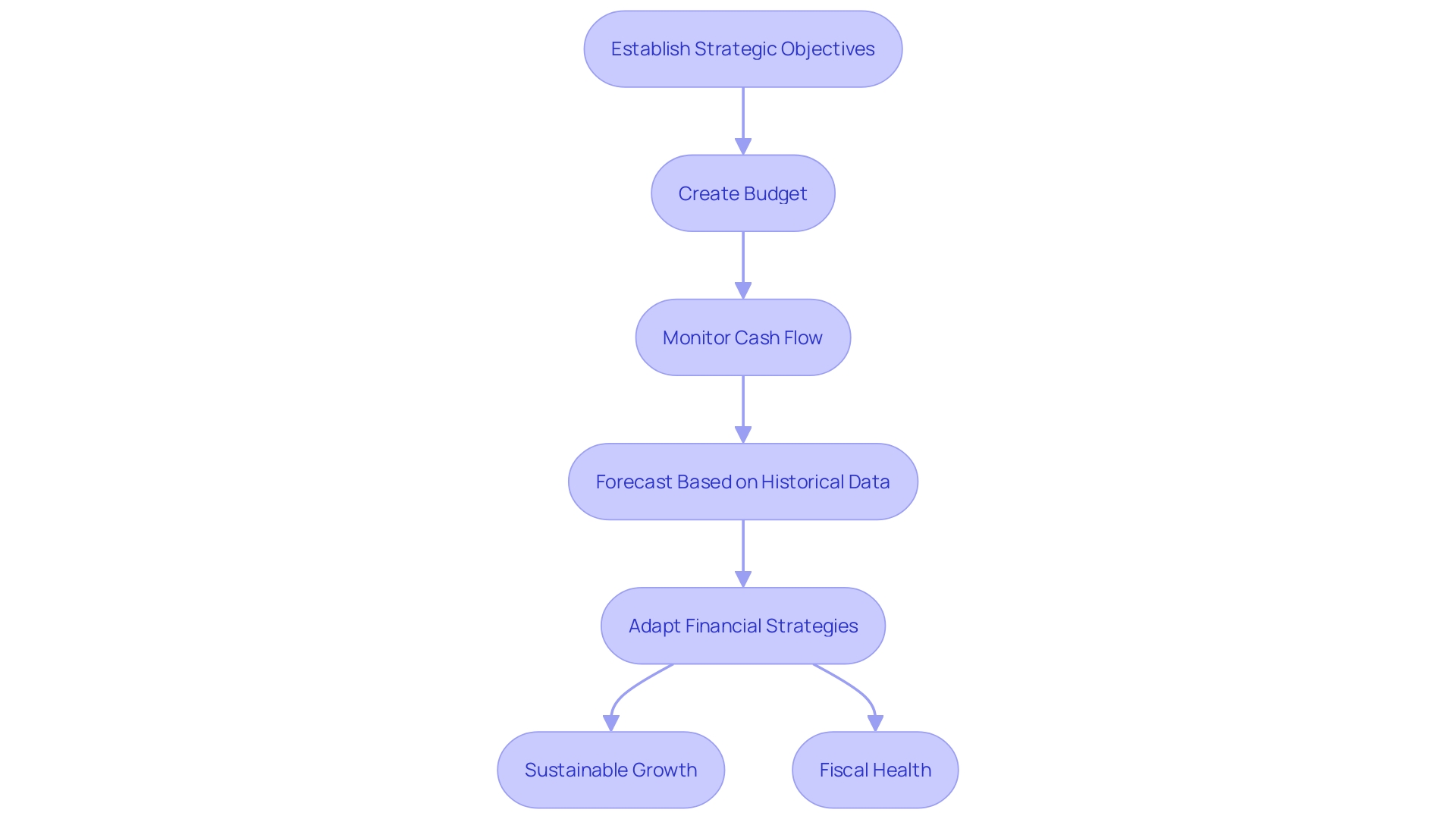
Cash Flow Management
Effective cash flow oversight is the lifeblood of any business, essential for maintaining operational stability and facilitating growth. It involves a comprehensive approach to tracking the inflow and outflow of cash, ensuring that a company can meet its financial obligations while seizing investment opportunities. A striking 60% of small and medium-sized enterprises (SMEs) face ongoing challenges with cash flow handling, highlighting the urgent need for robust strategies.
To enhance cash flow, businesses should prioritize timely invoicing and careful oversight of payment terms. These practices can greatly minimize the frequent problems of late payments and accounts receivable oversight, which impact 30% and 26% of businesses, respectively. Furthermore, optimizing inventory levels is another critical strategy, as it directly impacts cash flow by minimizing excess expenditure on unsold stock.
Despite the importance of these practices, a significant portion of SMEs—42%—still relies on manual processes like spreadsheets and paper records, particularly in sectors such as agriculture and professional services. 'This absence of technological uptake is a significant drawback; businesses that invest in contemporary accounting software frequently mention increased productivity (32%) and better data organization (30%) as key reasons.'. The right tools can streamline cash flow processes, allowing for better tracking of expenses and revenue, and ultimately generating more accurate financial forecasts.
In the current landscape, where cash flow serves as one of the best indicators of organizational health, understanding and implementing effective management strategies is vital. As experts in the field emphasize, cash flow is akin to the blood coursing through an organization's veins, fueling essential operations such as purchasing stock, covering expenses, and compensating employees. Tackling cash flow challenges in advance can result in lasting economic well-being, positioning enterprises for enduring achievement.
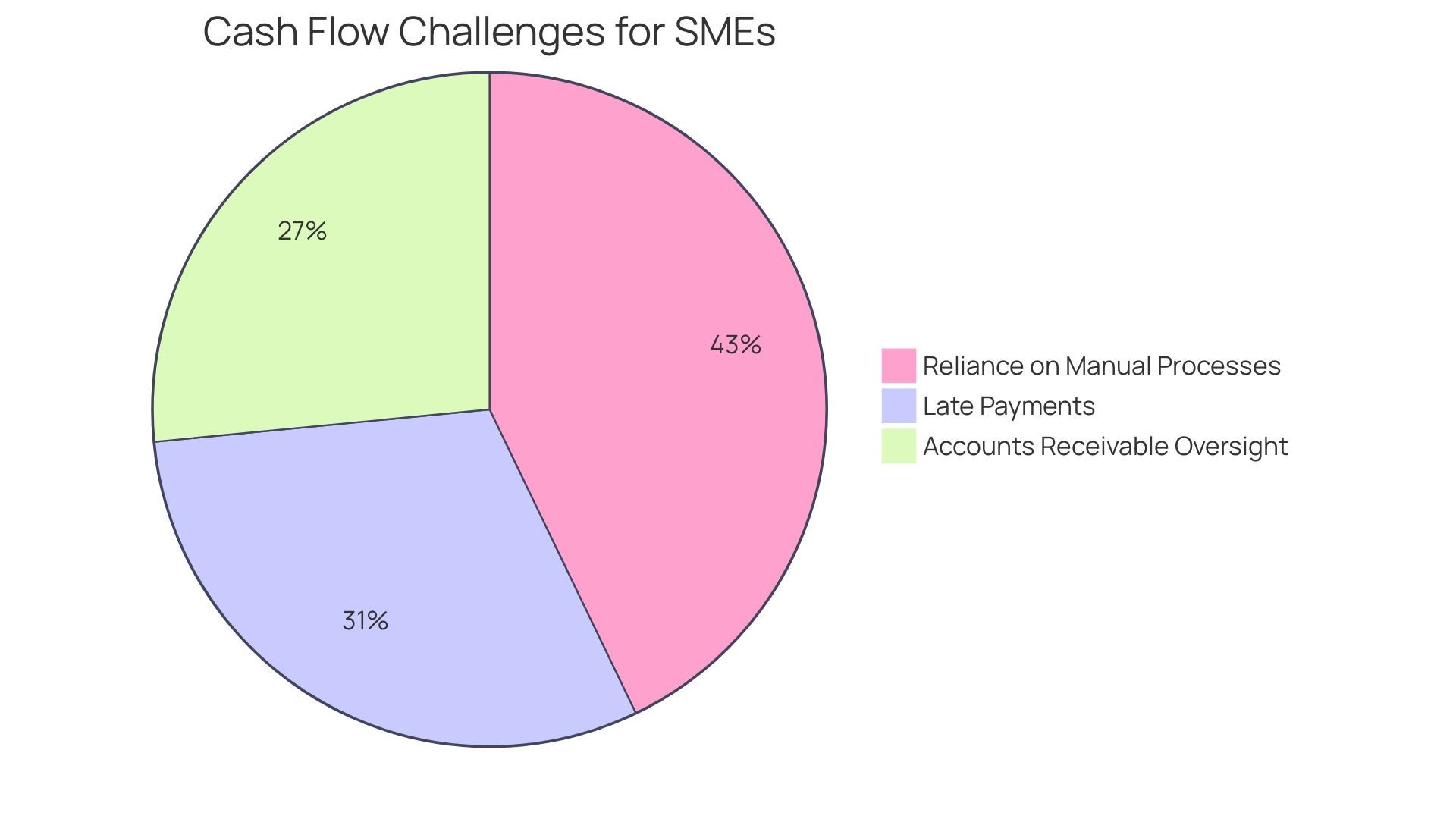
Monitoring Key Financial Metrics
Consistently tracking important economic indicators is essential for assessing the overall well-being of an enterprise. Metrics such as gross profit margin, return on assets, and current ratio offer vital insights into profitability, operational efficiency, and liquidity. By translating raw data from income statements and balance sheets into standardized ratios, organizations can benchmark their performance against industry peers. This benchmarking provides a clearer picture of an organization's financial standing and helps identify trends that may otherwise go unnoticed.
For instance, a strong gross profit margin indicates effective pricing strategies and cost management, while a healthy return on assets reflects how efficiently a company utilizes its assets to generate earnings. The current ratio, in contrast, acts as a liquidity indicator, helping organizations in evaluating their capability to fulfill short-term obligations.
'The standardized nature of these economic ratios serves as a decluttering tool, allowing enterprises to extract the most pertinent information for decision-making.'. They play a pivotal role in diagnosing economic wellbeing and influencing strategic choices, from investment opportunities to risk assessments. As the environment of commerce continues to change, grasping these metrics will remain crucial for long-term value generation and managing the intricacies of fiscal oversight.
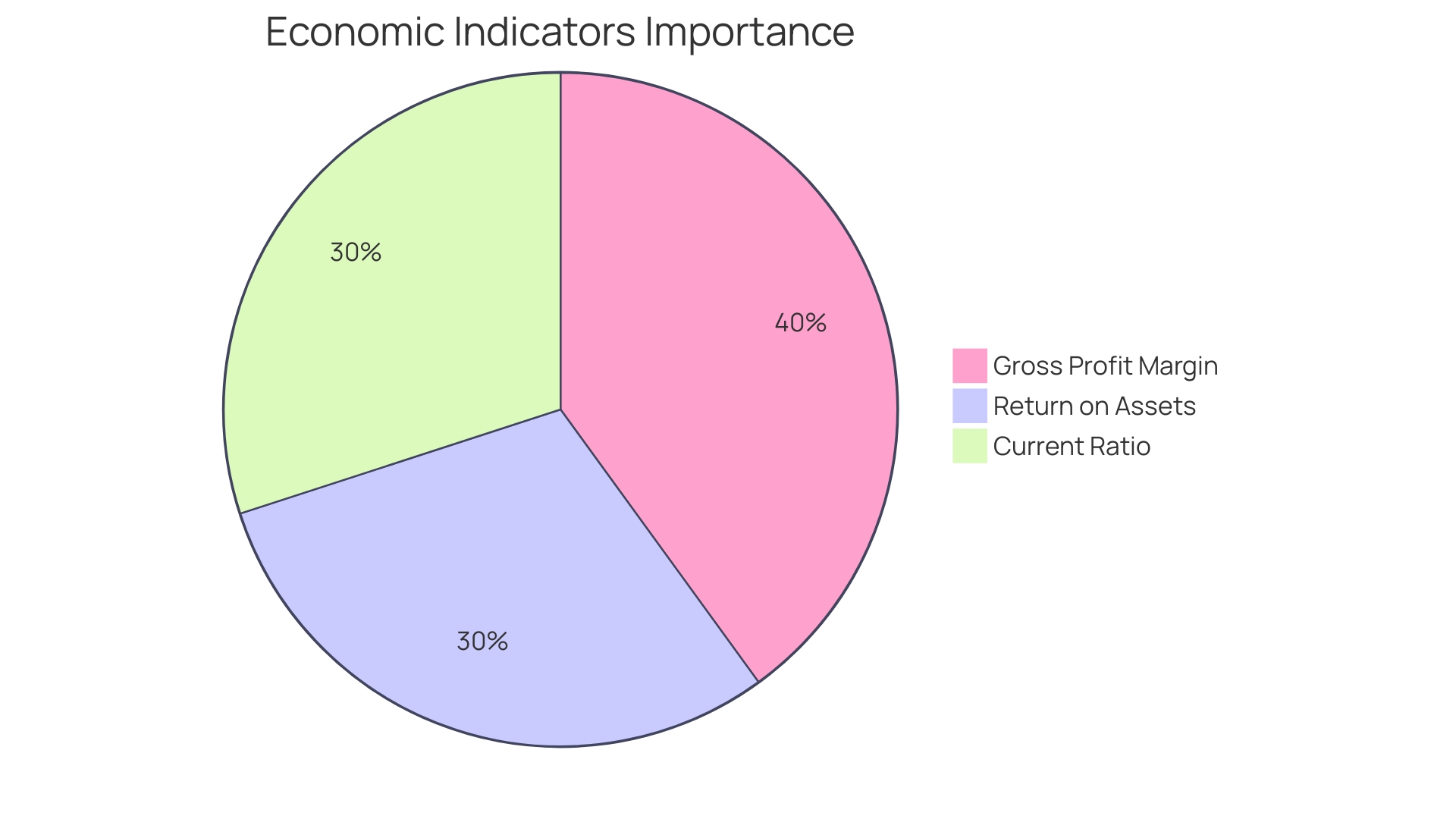
Regular Financial Check-ins
Regular monetary check-ins are vital for maintaining alignment with a business's economic objectives. 'These assessments should encompass a thorough review of budget adherence, cash flow status, and key metrics performance.'. By institutionalizing this practice, organizations can promptly detect potential discrepancies and enact corrective measures before they escalate into significant challenges.
Participating in a thorough economic performance evaluation is essential. It involves reflecting on initial monetary goals and asking critical questions: Did the business meet, exceed, or fall short of these targets? Assessing income statements, balance sheets, and cash flow statements offers a clear overview of the economic landscape. For example, grasping elements like revenue growth, profit margins, and cost control is crucial for informed decision-making related to future budgeting and resource distribution.
Moreover, examining operational efficiency and supply chain management processes is equally important. Companies should assess how well they managed operations and supply chain disruptions, if any occurred. A keen awareness of these elements not only aids in identifying inefficiencies but also enhances agility in responding to market shifts and customer preferences.
As part of these economic health assessments, companies should also evaluate their marketing and customer interaction strategies. A pivotal question to consider is the effectiveness of marketing efforts in reaching target audiences and achieving established goals. Analyzing the success of various campaigns and the return on investment from different marketing channels can provide insights into customer growth and overall market engagement.
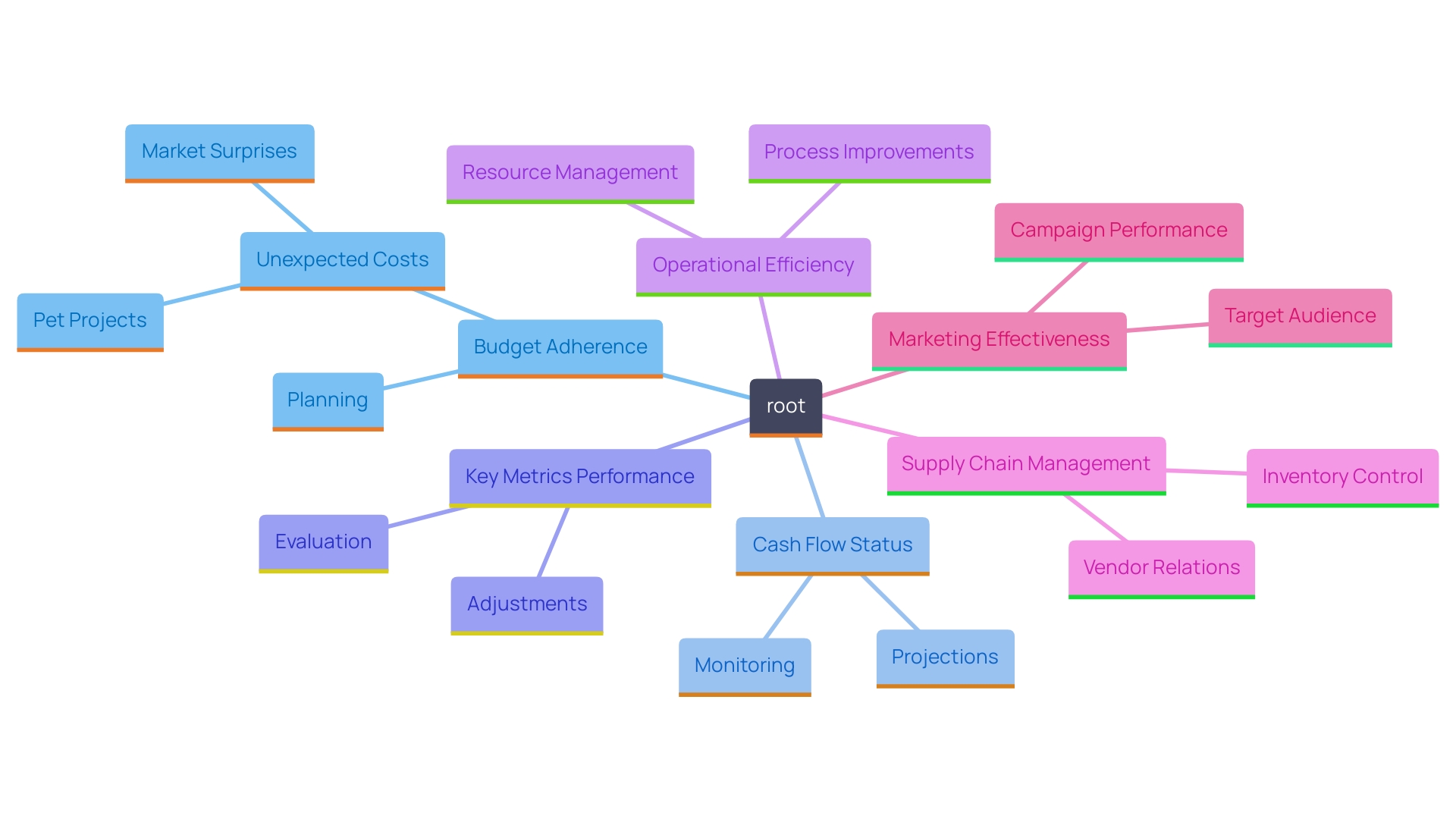
Strategic Financial Planning
Strategic monetary planning is critical for businesses aiming to align their economic goals with overarching company objectives. This multifaceted approach begins with a thorough assessment of current monetary resources, enabling organizations to understand their strengths and limitations. Precise economic forecasting is essential, as it helps predict future needs and sets measurable objectives that guide decision-making.
By creating a thorough monetary strategy, companies can prioritize investments that generate the greatest returns while efficiently handling risks. 'Based on recent information, businesses that utilize predictive analytics for monetary forecasting are better prepared to handle intricate economic situations and make knowledgeable choices.'. This capability is increasingly valuable in today's fast-paced business environment, where agility and foresight can differentiate successful companies from their competitors.
Real-world examples further illustrate the importance of strategic monetary planning. For instance, leading firms like General Mills and Mars Inc. have developed Climate Transition Action Plans (CTAPs) that not only address economic risks associated with climate change but also outline strategies for sustainable growth. These plans act as guides for incorporating climate factors into essential strategies, procurement, and customer engagement, illustrating how budget planning can go beyond conventional limits to include wider environmental objectives.
Moreover, the foundation of effective economic forecasting lies in compiling historical data. Businesses should gather comprehensive records, including sales, expenses, and profit margins, to identify patterns and trends that inform future projections. With at least three years of data, firms can develop robust forecasts that account for both seasonal variations and long-term growth trajectories. Such meticulous planning ensures that organizations are not only prepared for future challenges but also positioned to capitalize on emerging opportunities.
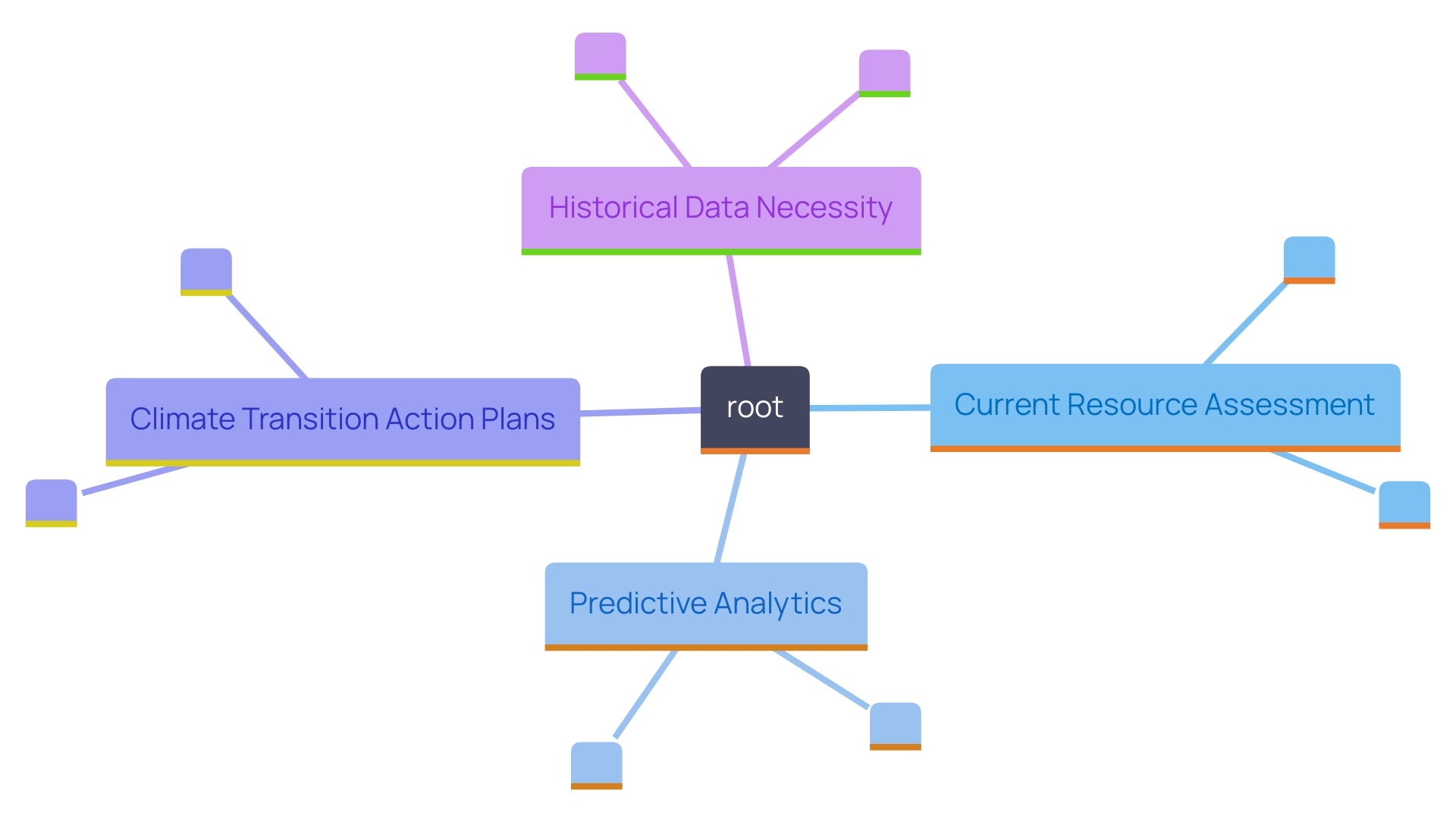
Maintaining Accurate Bookkeeping
Precise record-keeping acts as the foundation of an organization's economic health. It involves a systematic approach to recording and organizing monetary transactions, providing a clear view of income, expenses, assets, and liabilities. This meticulous record-keeping not only ensures adherence to regulations but also allows organizations to gain meaningful insights into their economic performance.
In the digital age, various accounting software options are available to streamline this essential process. These tools minimize the risk of errors and enhance efficiency, allowing business owners to focus on strategic decision-making. For example, leaders from the Young Entrepreneur Council stress the significance of investing in quality bookkeeping software, asserting that dependable tools can greatly enhance the precision of records, which consequently aids informed decision-making.
Moreover, the distinction between bookkeeping and accounting is crucial. While bookkeeping lays the groundwork by maintaining precise monetary records, accounting takes it a step further by analyzing and interpreting these records. 'Accountants not only summarize monetary data but also prepare statements and conduct audits to provide insights into overall company health.'. This dual method guarantees that enterprises utilize their monetary information effectively, allowing them to manage challenges and take advantage of opportunities.
The implications of poor bookkeeping are profound—errors, even minor ones, can lead to significant setbacks in financial planning and compliance. As noted, having reliable, up-to-date books is not merely a best practice; it's an absolute necessity for any organization aiming for growth and sustainability. By investing in competent bookkeeping solutions and understanding the interplay between bookkeeping and accounting, businesses can position themselves for long-term success.
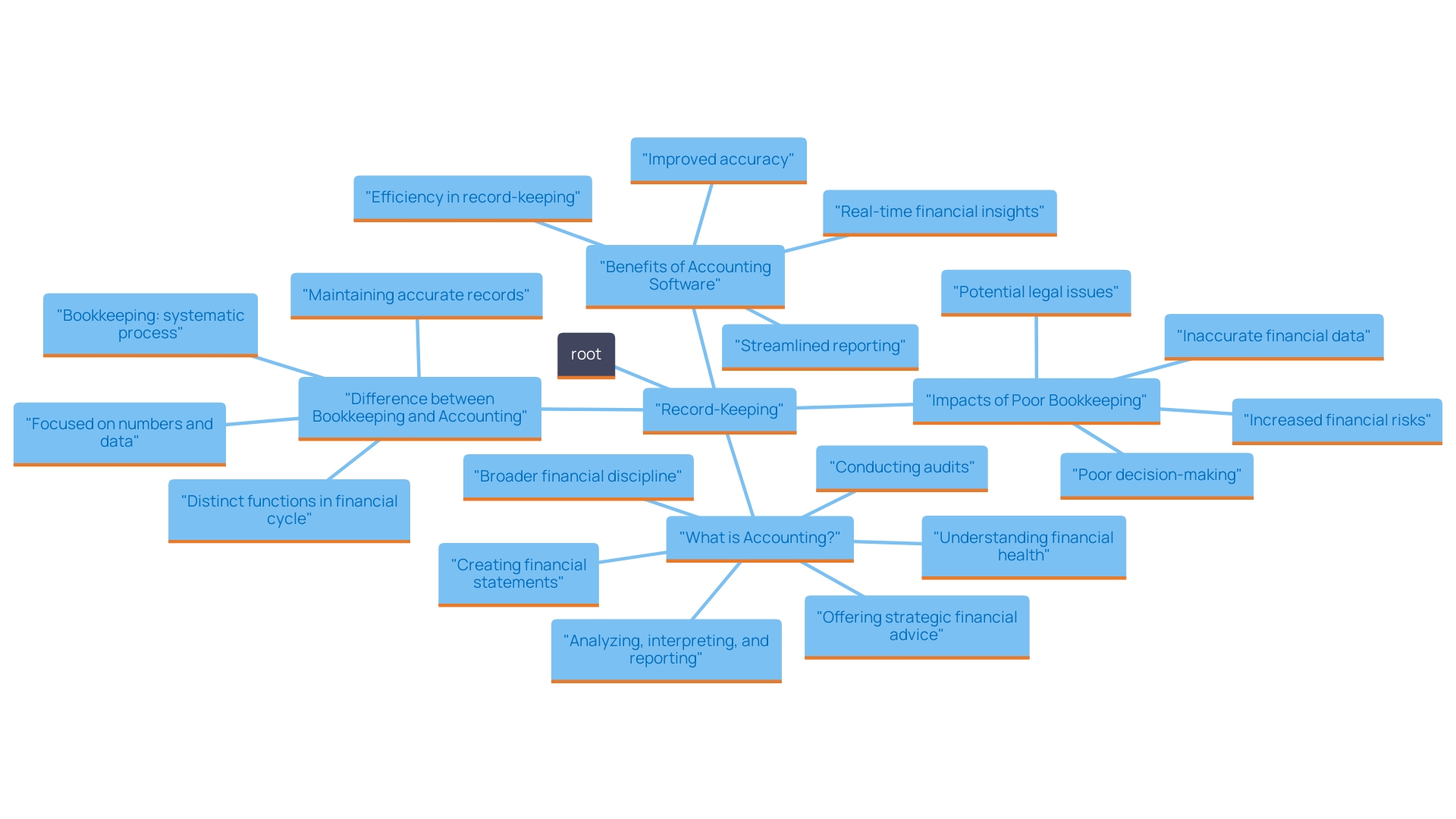
Creating a Buffer for Unexpected Expenses
Creating a strong monetary reserve is crucial for efficiently handling unforeseen costs, thus protecting operational continuity. Businesses should aim to maintain a reserve of funds that can be swiftly accessed during emergencies, such as sudden repairs or shifts in market dynamics. 'This monetary cushion not only allows companies to navigate unforeseen challenges but also enhances their ability to seize opportunities that may arise amidst economic fluctuations.'.
Research indicates that businesses with a monetary cushion are better positioned to weather economic storms. For instance, a proactive approach in building this reserve can significantly mitigate the risks associated with cash flow disruptions, ensuring that organizations maintain operational integrity even in turbulent times.
Moreover, aligning with best practices in money management can enhance overall resilience. By concentrating on careful budgeting and cash flow analysis, organizations can better anticipate their monetary requirements and modify their strategies accordingly. As the economic landscape evolves, ensuring adequate liquidity through a well-planned reserve can ultimately lead to sustained growth and stability.
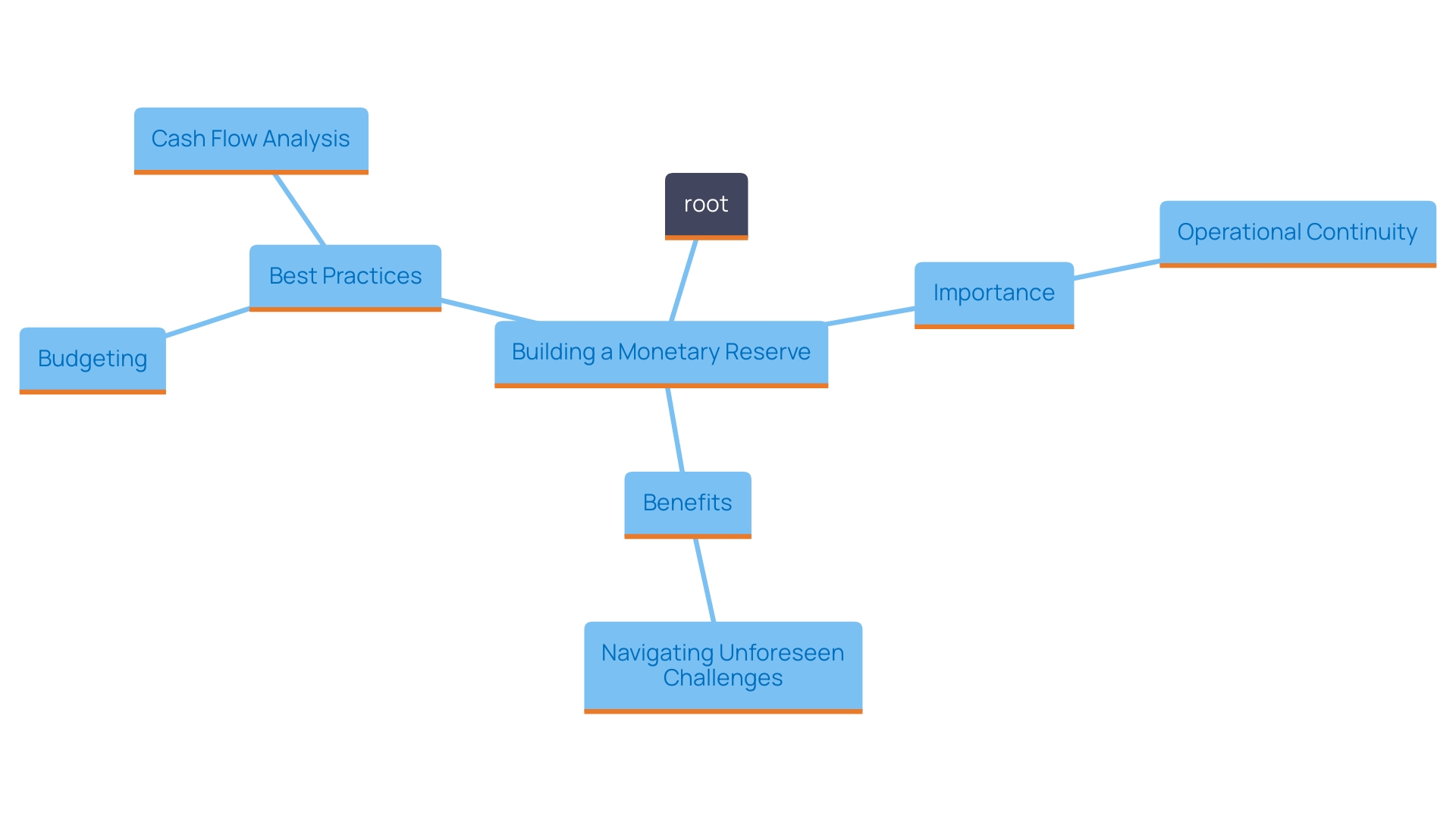
Assessing Financial Health Through Financial Statements
Evaluating monetary reports is essential for a thorough appraisal of a business's economic condition. The three main fiscal reports—the balance sheet, income statement, and cash flow statement—provide detailed insights into an organization's assets, liabilities, revenues, and cash flows.
-
Balance Sheet: This document offers a glimpse of the organization's economic status at a particular moment, outlining what it possesses and what it is obligated to pay. For example, a well-organized balance sheet can emphasize the organization's liquidity and stability, essential elements for drawing in prospective investors.
-
Income Statement: By reflecting the company's profitability over a specified period, the income statement enables stakeholders to understand revenue generation and expense management. Tracking revenue growth and profit margins allows for effective forecasting of future performance.
-
Cash Flow Statement: This statement reveals the actual cash generated or used during a period, which is essential for managing liquidity. A positive cash flow is a strong sign of economic well-being, as it demonstrates the organization can meet its short-term obligations.
Regular reviews of these monetary documents not only help in identifying strengths and weaknesses but also uncover opportunities for improvement. 'Based on recent discoveries, companies that perform comprehensive fiscal evaluations are 50% more likely to make knowledgeable choices that improve profitability and operational effectiveness.'.
Furthermore, as Paisley Demby emphasizes in workshops related to finance, mastering these statements is essential for converting business concepts into feasible projections. This understanding is fundamental, especially for companies aiming to secure funding, as it demonstrates a clear monetary strategy that addresses procurement, allocation, and returns on investment.
Ultimately, a strategic approach to analyzing these statements can pinpoint areas needing immediate attention, facilitating proactive measures that align with long-term economic objectives.
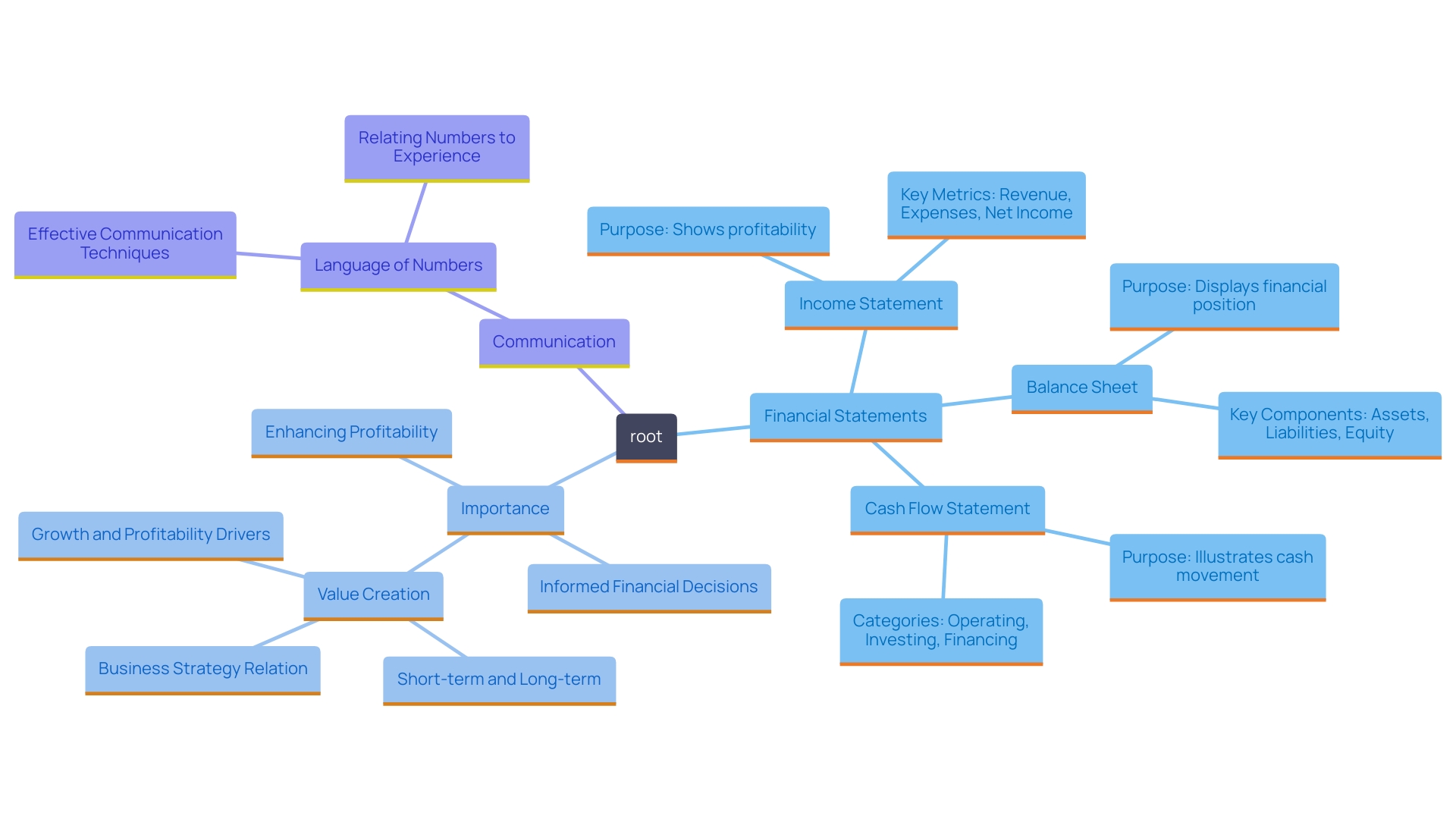
Evaluating Liquidity, Profitability, and Solvency
Effective evaluation of liquidity, profitability, and solvency is vital for a robust understanding of a business's economic health.
-
Liquidity refers to an organization's capacity to meet its short-term obligations. It’s essential for maintaining operational stability and avoiding cash flow crises. Companies frequently depend on precise liquidity evaluations to manage urgent monetary challenges, ensuring they can meet costs like payroll and supplier payments. A well-managed liquidity position can significantly enhance negotiation power with creditors and suppliers, fostering better terms that contribute to overall economic resilience.
-
Profitability evaluates an organization's overall financial performance, reflecting its capacity to generate income relative to its expenses. Monitoring profitability metrics helps organizations identify strengths and weaknesses in their operations. For instance, the ability to maintain a healthy profit margin not only supports growth initiatives but also attracts potential investors who are keen on sustainable returns. A focus on profitability can drive strategic decisions, from cost management to pricing strategies, ensuring the organization remains competitive in its market.
-
Solvency indicates long-term economic health, revealing a company's ability to meet long-term obligations. A solvency assessment helps identify risks associated with debt levels and long-term commitments. Businesses with a strong solvency position are better positioned to secure financing and invest in future growth opportunities. Furthermore, grasping solvency metrics can assist organizations in making informed choices regarding capital structure and investment strategies.
By consistently observing these three essential elements, organizations can make educated strategic choices that encourage ongoing growth and improve overall economic stability. As emphasized in recent evaluations, small enterprises, often confronting distinct obstacles in obtaining funding, need to maintain a delicate balance between these economic metrics to survive and thrive in a competitive environment. A comprehensive approach to financial health assessments can empower organizations to navigate uncertainties, adapt to changing market conditions, and ultimately achieve long-term success.
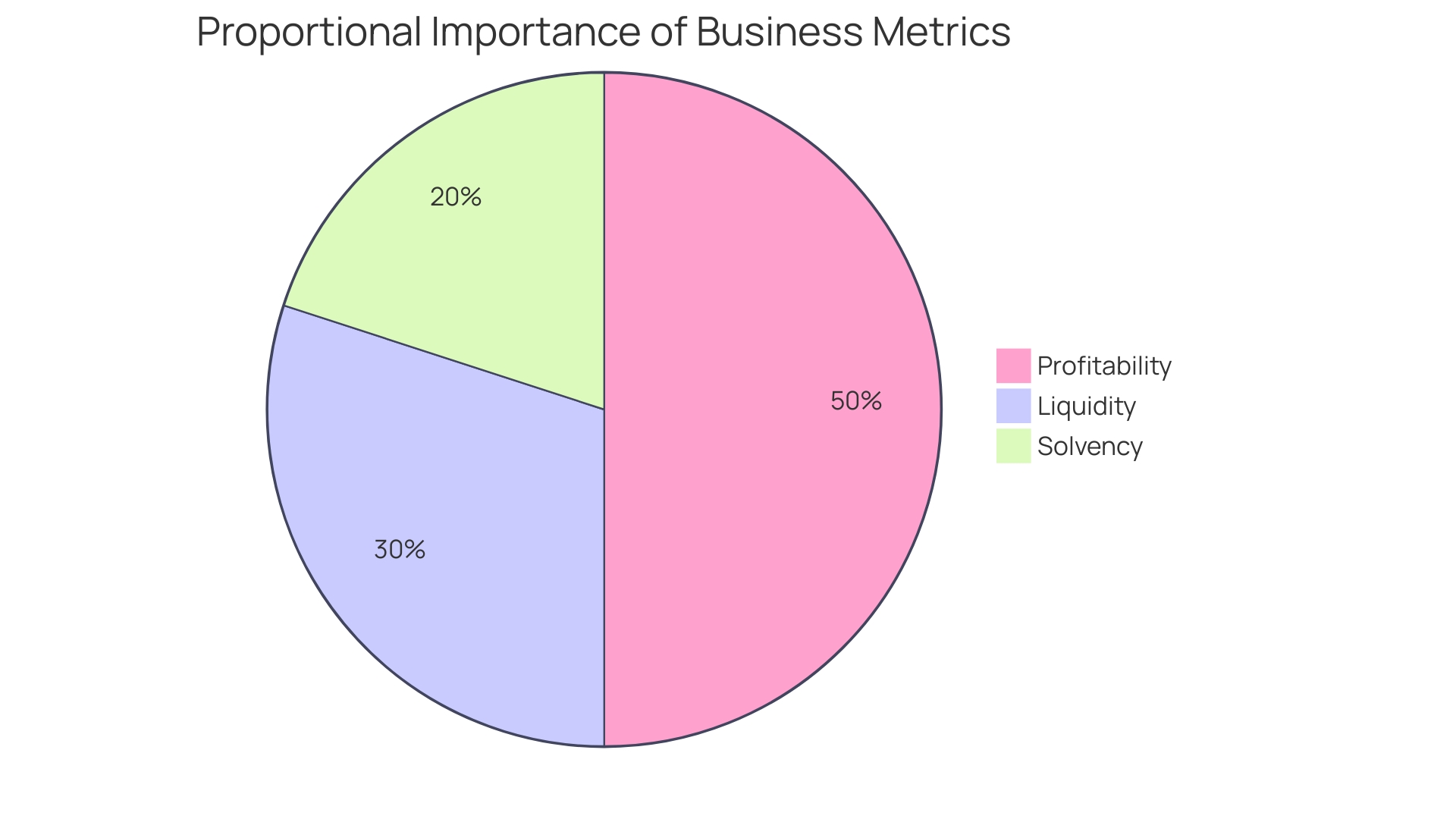
Optimizing Asset Management
Effective asset management is pivotal in ensuring that an organization utilizes its resources to their fullest potential. This encompasses not only the performance evaluation of tangible assets, such as inventory and equipment, but also extends to intangible assets, including intellectual property and digital resources. By implementing robust asset tracking systems, organizations can enhance their operational efficiency, mitigate losses, and maintain optimal asset conditions.
In today's dynamic commercial environment, characterized by rapid globalization and digital transformation, visibility and control over assets have become critical. For instance, firms that have embraced advanced asset tracking techniques—spanning from RFID technology to complex asset oversight software—report considerable enhancements in resource use, frequently resulting in a notable decrease in operational expenses.
Statistics indicate that organizations that actively track their assets can increase their return on investment by up to 20%, showcasing the tangible benefits of such initiatives. Moreover, effective asset oversight fosters a culture of informed decision-making, enabling enterprises to adjust swiftly to market shifts and take advantage of growth possibilities.
As emphasized by Kara Kennedy, Manager of Capital Assets at Woodlands County, creating a thorough asset oversight strategy encourages a deeper insight into asset conditions and replacement requirements, which is crucial for sustaining economic well-being. In a landscape where data governance is increasingly important, establishing clear policies and procedures for asset data oversight will further enhance the integrity and usability of business assets.
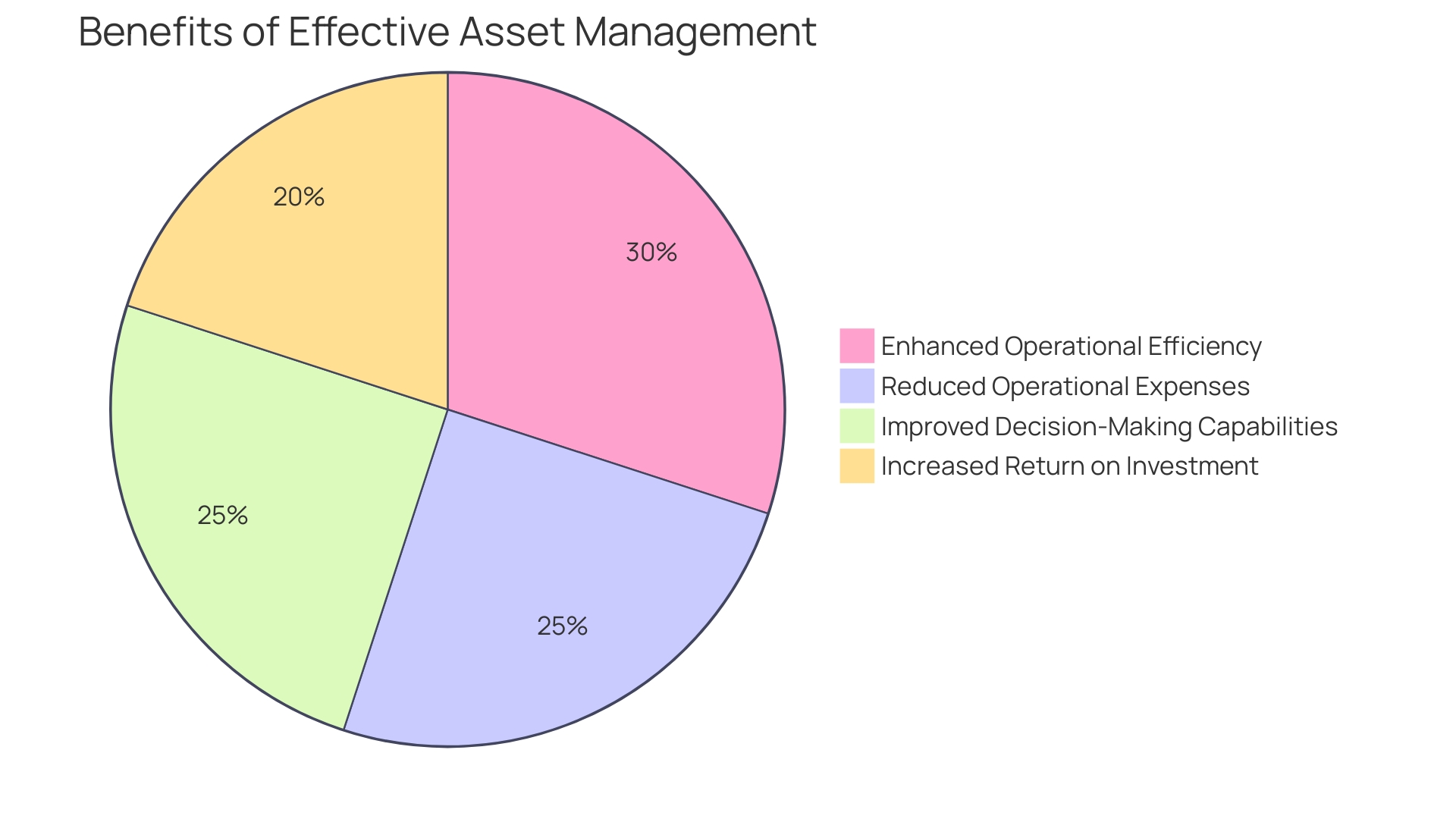
Managing Credit and Compliance
Preserving monetary integrity relies on effective credit and compliance management. Establishing robust credit policies is essential for monitoring credit risk, which can significantly impact a company’s bottom line. A comprehensive approach involves not only defining clear credit guidelines but also continuously assessing adherence to monetary regulations. For instance, M&T Bank, a leader in the U.S. banking sector, has implemented stringent Clean Code standards across its development teams to ensure that software remains compliant and operationally efficient, safeguarding sensitive customer data and minimizing the risk of security breaches.
Moreover, the landscape of digital payments is evolving rapidly. Nets, a leading supplier of digital payment solutions, has encountered the challenge of presenting intricate technical information in an understandable way, highlighting the significance of transparent communication in monetary practices. Their dedication to adjusting to regulatory requirements while addressing varied client needs highlights the essential aspect of proactive compliance.
Statistics reveal that large banks often charge significantly higher credit card interest rates—ranging from 8 to 10 percentage points more than smaller banks and credit unions—highlighting the monetary implications of credit management decisions. This disparity not only affects consumer choices but also emphasizes the need for businesses to carefully evaluate their credit offerings.
In conclusion, by prioritizing the establishment of sound credit policies and ensuring thorough compliance with financial regulations, organizations can effectively protect their assets and enhance their reputation in an increasingly competitive marketplace.
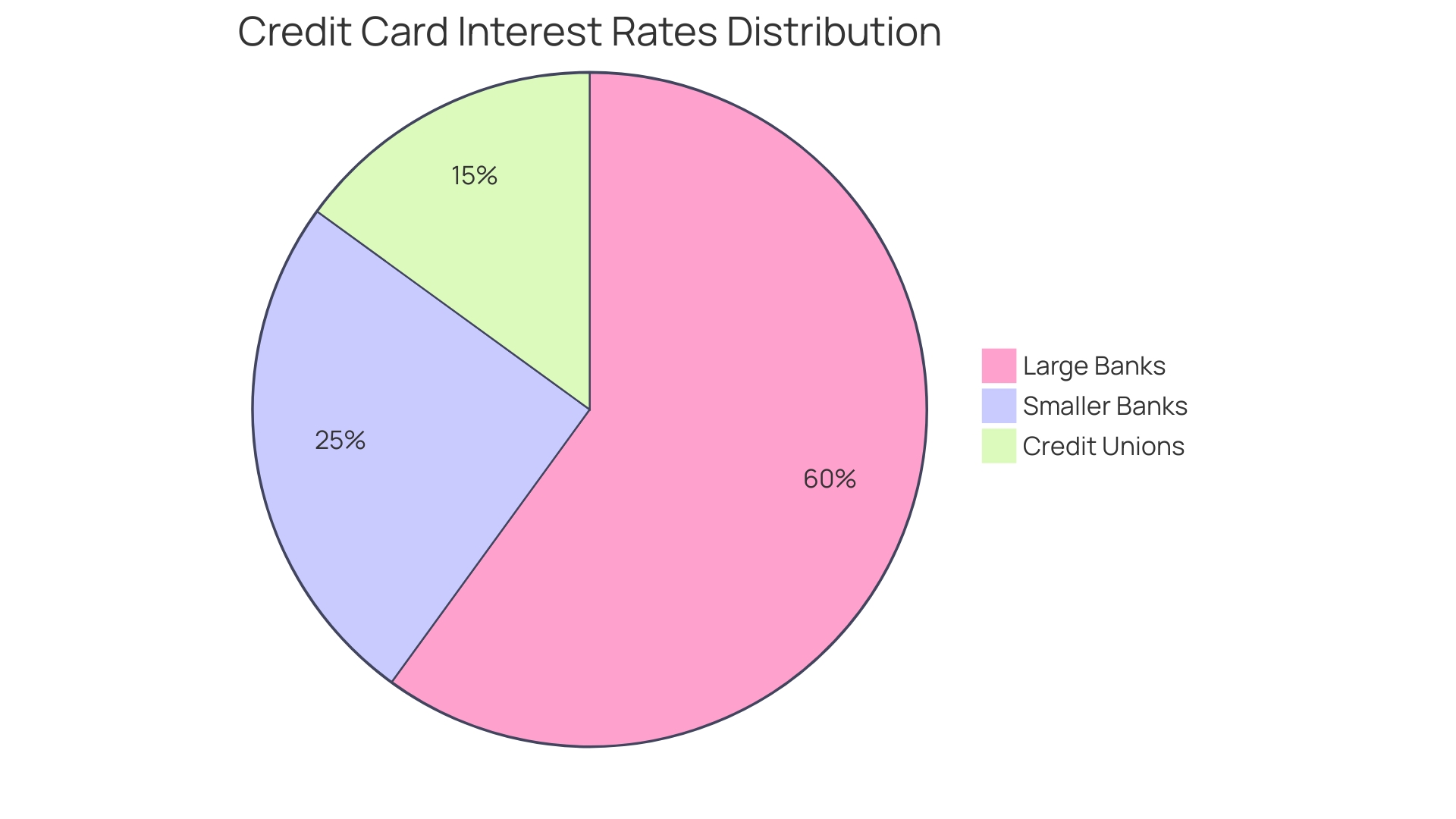
Conclusion
A strategic approach to financial management is essential for businesses aiming to thrive in today's competitive landscape. The integration of budgeting and forecasting sets the foundation for effective resource allocation, enabling organizations to anticipate revenue and manage expenditures efficiently. By adopting robust cash flow management practices, companies can mitigate the common pitfalls of delayed payments and optimize inventory levels, ensuring they are well-equipped to seize growth opportunities.
Monitoring key financial metrics provides valuable insights into profitability, operational efficiency, and liquidity, allowing organizations to benchmark their performance and identify trends. Regular financial check-ins facilitate timely adjustments, ensuring alignment with financial goals while enhancing agility in response to market changes. Strategic financial planning further solidifies this alignment, allowing businesses to prioritize investments and navigate complex economic conditions effectively.
Accurate bookkeeping is vital for compliance and informed decision-making, while maintaining a financial buffer prepares organizations for unexpected challenges. Regular assessment of financial health through detailed analysis of financial statements empowers businesses to make proactive measures, ensuring long-term stability. Evaluating liquidity, profitability, and solvency fosters a comprehensive understanding of financial health, guiding strategic decisions that promote sustained growth.
Ultimately, optimizing asset management and managing credit and compliance are critical components in building a resilient financial foundation. By implementing these strategies, organizations can not only safeguard their financial integrity but also position themselves for long-term success in an ever-evolving business environment.




